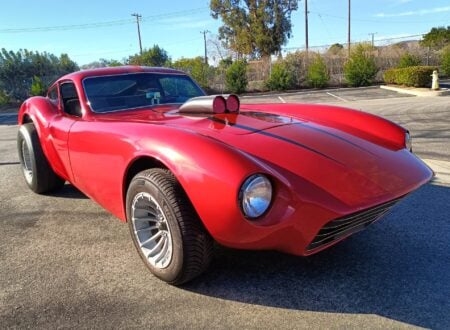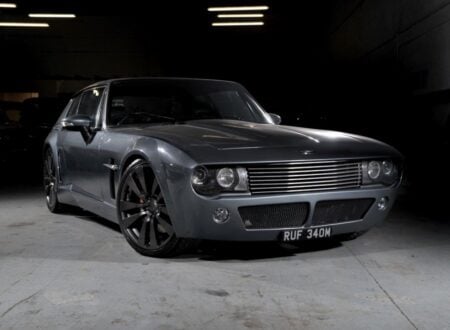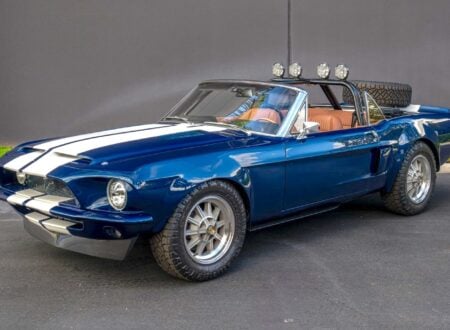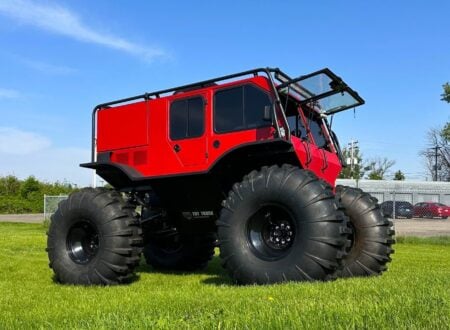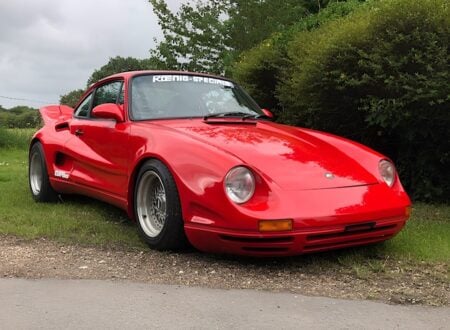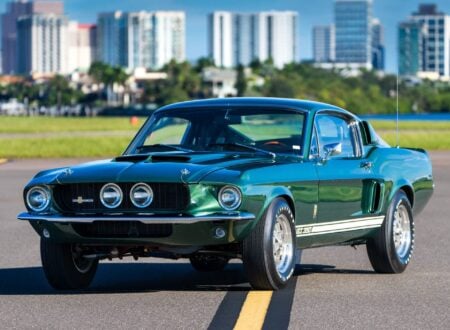This is a rare high-roof version of the Toyota Mega Cruiser, the rare Japanese answer to the American Humvee. This vehicle was used for safari tours in Africa, and it has twin opening roof panels so people can stand up and poke their heads through for a better view.
Just 133 civilian examples of the Toyota Mega Cruiser were made, with most of the 3,000 units produced being used by either the Japanese military or the nation’s various police forces. A handful have been exported out of Japan, and they never fail to gather a crowd when they show up to Cars & Coffee events.
Fast Facts: The Toyota Mega Cruiser High Roof
- The Toyota Mega Cruiser was developed in the early 1990s in response to Japan Self-Defense Forces’ requirement for a domestically produced military vehicle comparable to the American Humvee. Initially shown in 1993, it entered production in late 1995, offering both military (BXD10) and civilian (BXD20) variants, with civilian versions featuring luxury features like power windows and air conditioning.
- Dimensionally massive, the Mega Cruiser measures 5,090 mm long, 2,170 mm wide, and 2,075 mm tall, weighing approximately 2,850 kgs. It is powered by a 4.1 liter turbo-diesel producing 153 bhp and 280 to 300 lb ft torque, with a 4-speed automatic transmission, independent four wheel suspension, portal axles, and three locking differentials – front/middle/rear.
- Production ran between 1995 and 2001 and totaled fewer than 3,000 examples, with roughly 133 designated for civilian use. Most units served Japanese military, police, emergency, or fire brigade applications. Despite its impressive off-road ability, civilian sales were limited by high taxes, excessive fuel consumption, and challenging dimensions unsuited to smaller Japanese roads.
- After ending production in 2001, the Mega Cruiser became highly sought after by collectors and off-road enthusiasts globally. This particular high-roof model, previously used for Kenyan safari tours, includes twin roof hatches and seating for 10, and is now for sale in the United State.
History Speedrun: The Toyota Mega Cruiser
The Toyota Mega Cruiser is one of those vehicles that makes you stop mid-scroll and stare. Big, boxy, and wildly overbuilt for civilian life, it was Toyota’s largest and most extreme 4×4 ever put into production. Designed primarily for military use but offered in a (very) limited civilian run, the Mega Cruiser was a technological showcase and a logistical contradiction – massive in scale but built for a country known for narrow city streets and laneways.
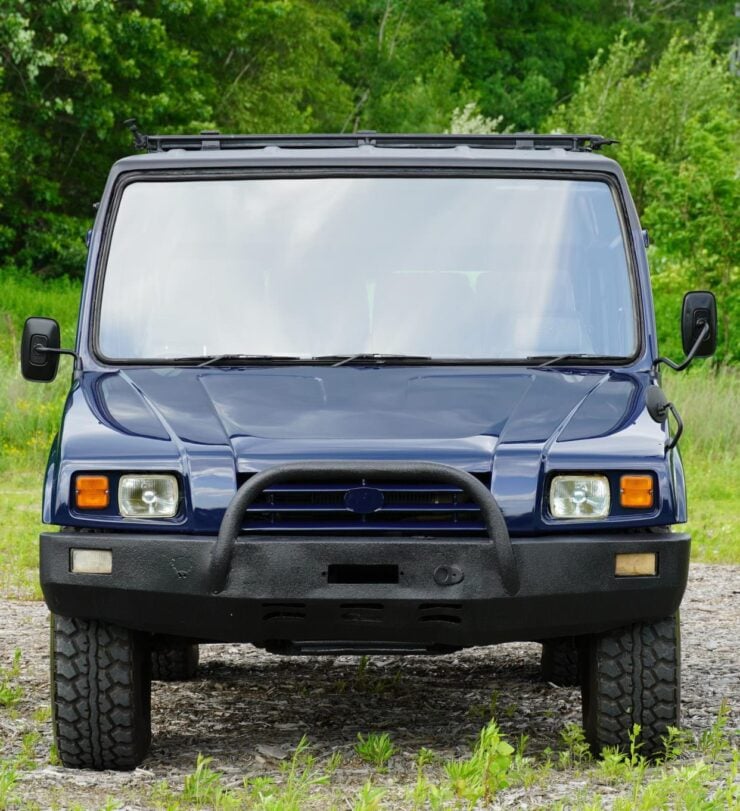

Development of the Mega Cruiser began in the early 1990s, driven by a specific request from the Japan Self-Defense Forces (JSDF). At the time, Japan lacked a domestically-produced military vehicle comparable to the American HMMWV (Humvee). Toyota stepped up, designing the vehicle through its Gifu Auto Body subsidiary – also responsible for the development of many (if not most) modern Land Cruisers.
The prototype made its first public appearance at the 1993 Tokyo Motor Show, and production followed in late 1995. Though primarily developed for military applications, Toyota made the decision, for better or worse, to release a small number of civilian-spec models – perhaps as a way to recoup some development costs or test the appeal of a 4×4 at this scale.
The military variant, codenamed BXD10, was stripped-down, durable, and function-first – not dissimilar in that way to the military Humvee. The civilian variant, the BXD20, retained the off-road capability but added modest creature comforts like air conditioning, power windows, and a more refined interior – though “refined” is perhaps a bit of a stretch by modern SUV standards.
Toyota Mega Cruiser Specifications
The Mega Cruiser is, dimensionally, a monster. It stretches 5,090 mm (200.4 inches) long, spans 2,170 mm (85.4 inches) in width, and towers at 2,075 mm (81.7 inches) tall, with a wheelbase of 3,395 mm (133.7 inches). Curb weight is approximately 2,850 kgs (6,283 lbs), depending on the version and final configuration.
Power is provided by the 15B-FTE, a 4.1 liter direct-injection inline-four turbo-diesel. It produces approximately 153 bhp and 280 to 300 lb ft of torque. That doesn’t sound like much for a vehicle this large, but its torque-rich powerband and military-grade reliability made it ideal for off-road work. The transmission is a 4-speed Aisin-Warner automatic paired with a dual-range transfer case for low-speed crawling.
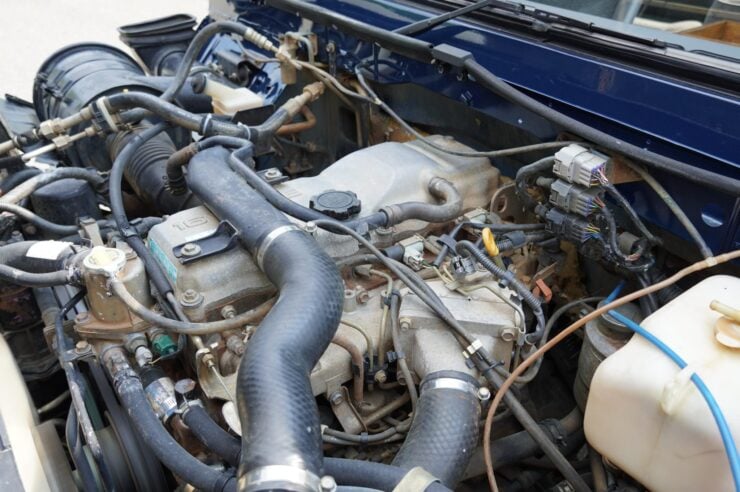

The Mega Cruiser has independent double-wishbone suspension at all four corners, portal axles with hub-reduction gearing, inboard ventilated disc brakes, and full-time four-wheel drive with three locking differentials (front, center, and rear).
The vehicle also came with four-wheel steering, offering an absurdly tight turning radius for its size, of 5.6 meters (about 18 feet) – less than a Toyota Corolla. Some models also had a central tire inflation system, another feature borrowed from heavy-duty military applications.
Production And Sales Numbers
Between 1995 and 2001, Toyota produced just under 3,000 Mega Cruisers in total. Most of those, estimated between 2,500 and 2,900, went directly to military units or government agencies. Fire brigades, emergency rescue services, and police units were common recipients. That left fewer than 150 civilian examples for private sale, with most agreeing the final number was 133.
Toyota never exported the vehicle in any official capacity. However, a small number of left-hand-drive prototypes were reportedly built – perhaps as an experiment in foreign military contracts. These are much rarer than the right-hand-drive civilian models, and only a handful are believed to survive.
Sales were limited to Japan, and even there, buyers had to contend with steep annual road taxes due to the vehicle’s width and engine displacement. Add in fuel economy figures in the low teens (liters per 100 km), and the Mega Cruiser became a tough sell for anyone not planning to scale mountains or wade through rivers.
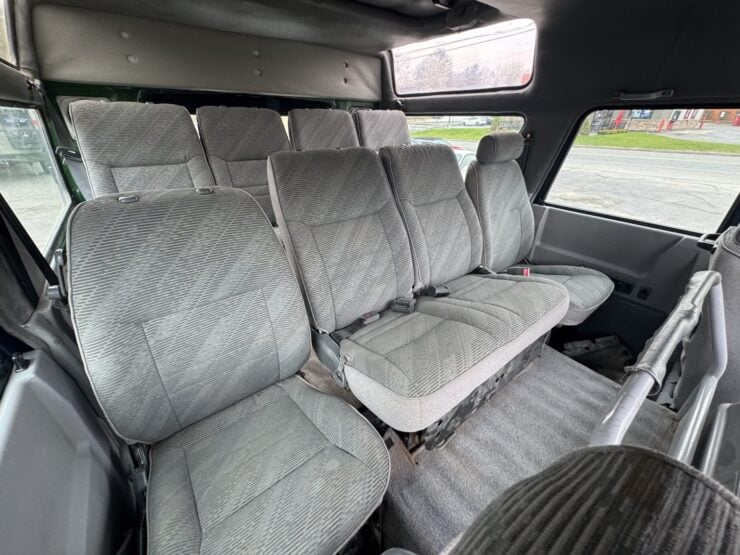

The Mega Cruiser’s real home was with the JSDF, where it was used primarily for troop transport and as command vehicles, and occasionally outfitted with communications or missile systems like the Type 93 Surface-to-Air Missile launcher.
Emergency services adapted their own versions, including high-roof ambulances and mobile command posts. These saw use in disaster zones, especially in the aftermath of floods, typhoons, and earthquakes – circumstances where conventional 4x4s could struggle to get through.
Civilian owners typically included wealthy collectors, off-road enthusiasts, and occasionally car dealerships or tuning shops that used them as promotional vehicles. The rarity and scale of the Mega Cruiser made it a status symbol in Japan’s niche 4×4 scene.
The End Of Production, And A New Life As An Export Vehicle
Toyota quietly ceased production in August 2001, with remaining sales winding down in early 2002 as stock sold out. The decision wasn’t surprising. Sales were never strong, civilian adoption was niche, and the vehicle didn’t align with Toyota’s broader global strategy.
Yet, even as production ended, the engineering lessons learned from the Mega Cruiser influenced Toyota’s 4×4 lineup. Components like hub-reduction axles, multi-link suspension geometry, and steering technologies made their way into Land Cruiser development, especially in heavy-duty 70 Series variants used in mining and agriculture.
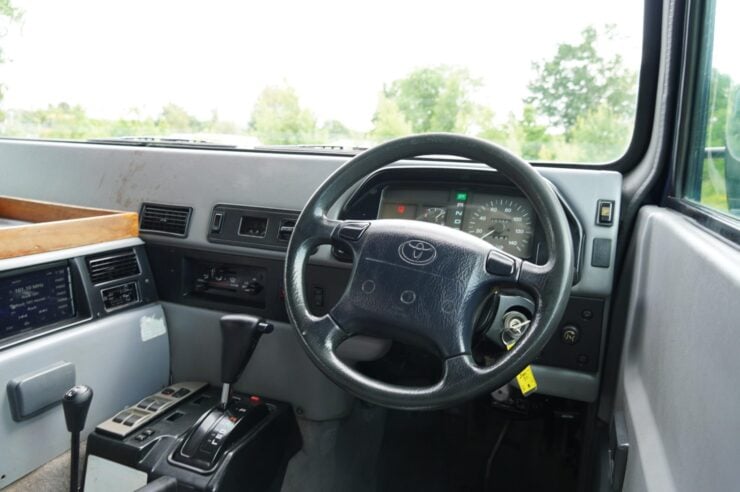

With such a small number of civilian units sold, and most military models still in government hands or retired, the Mega Cruiser is now a coveted item among off-road collectors. Import laws in countries like the United States (which allow vehicles older than 25 years to be imported without restrictions) have only recently opened the door for them to start crossing the Pacific.
The Toyota Mega Cruiser High Roof Shown Here
As mentioned in the introduction, this is a 1996 Toyota Mega Cruiser High Roof that was used as a tour vehicle by a safari company in Kenya before being imported to the US.
It must have made an ideal tour vehicle due to the higher roof, the safari windows, and the two hatches in the roof that open to allow the passengers to stand up and stick their heads through, giving them a 360º panoramic view of the wildlife.
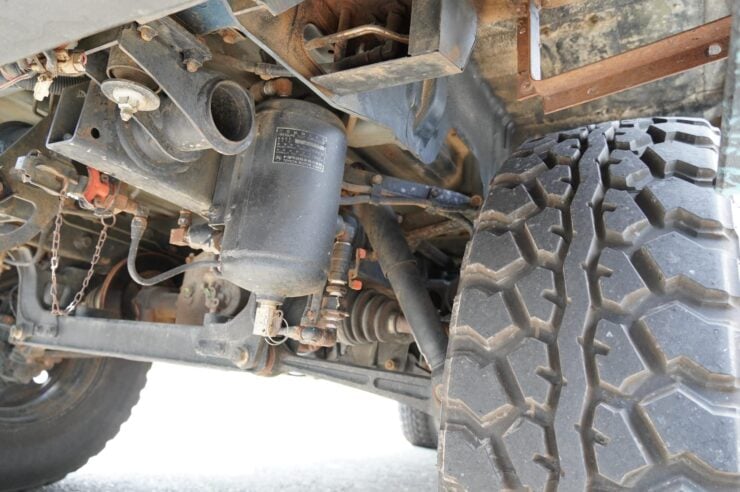

Inside this Mega Cruiser you’ll find a right-hand-drive cabin with seating for 10 passengers trimmed in gray cloth, accompanied by a Kenwood head unit and front and rear air conditioning.
It’s now being offered by the selling dealer in New Hampshire with a clean Florida title on Bring a Trailer. If you’d like to read more about it or place a bid you can visit the listing here.
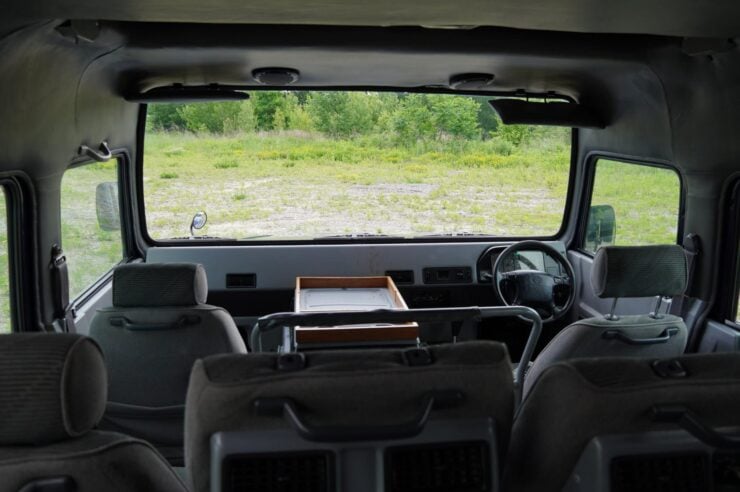
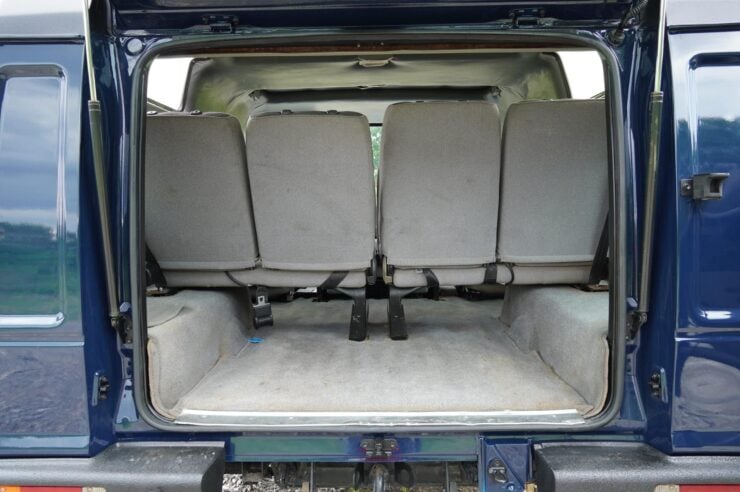
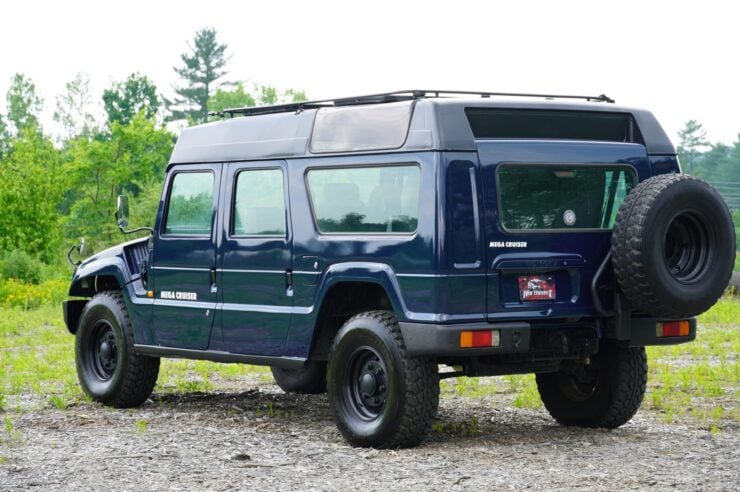
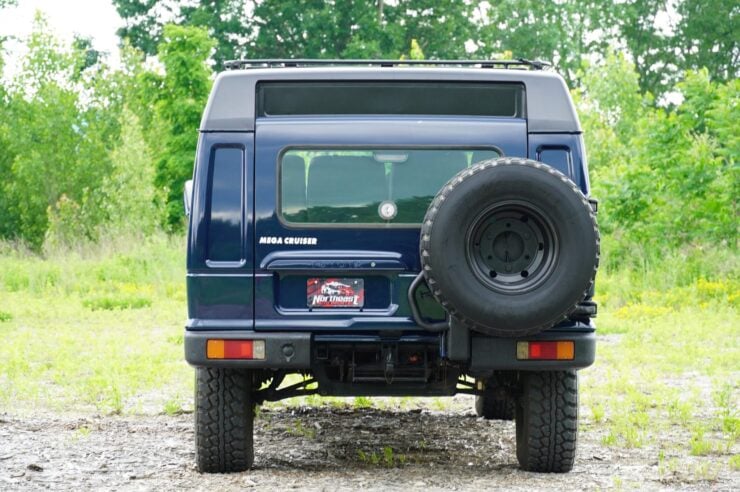
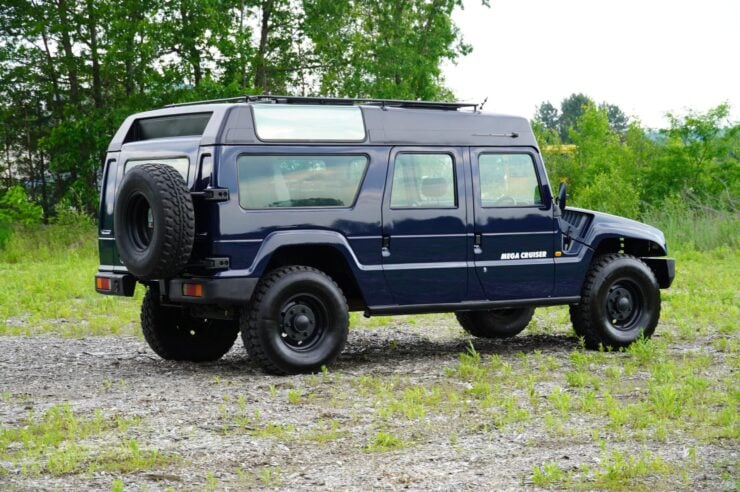
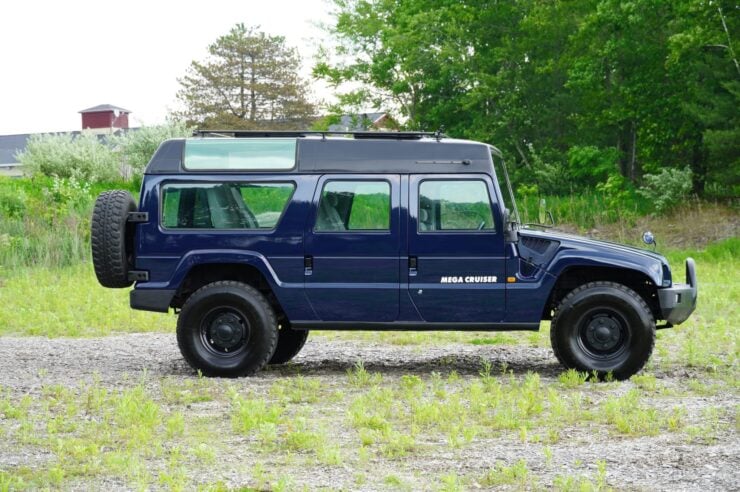
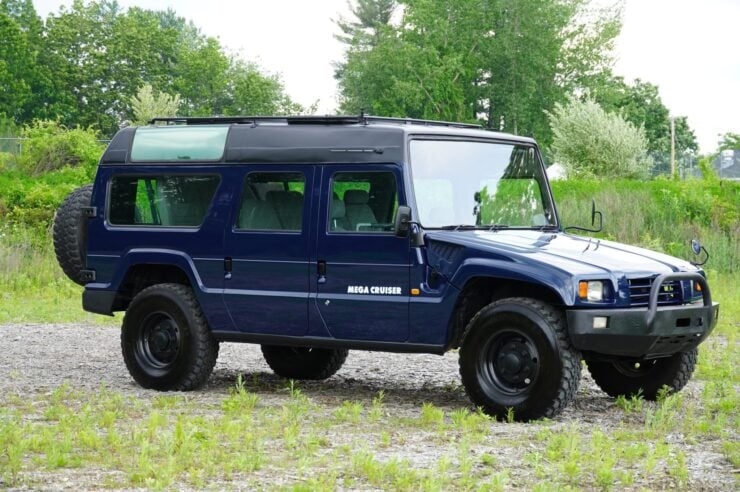
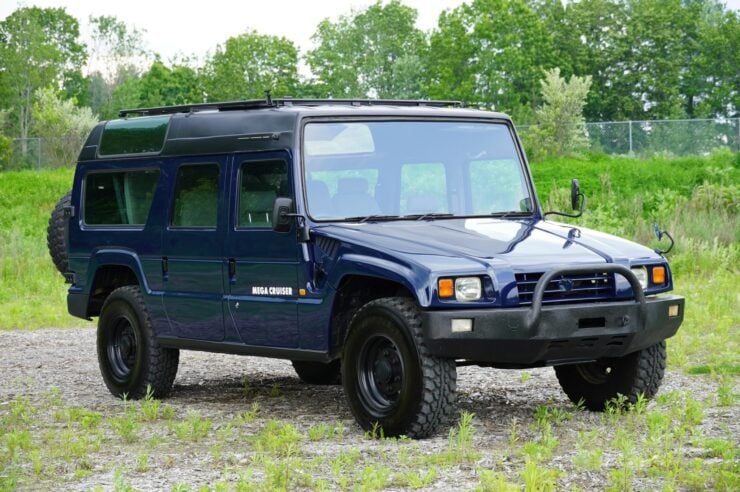
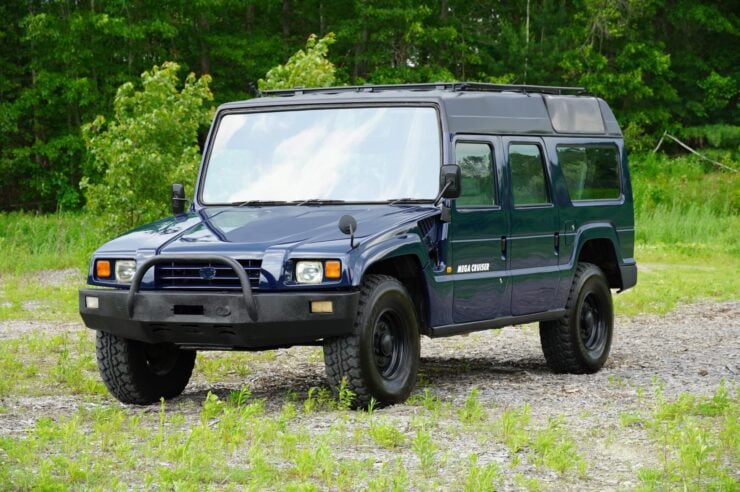
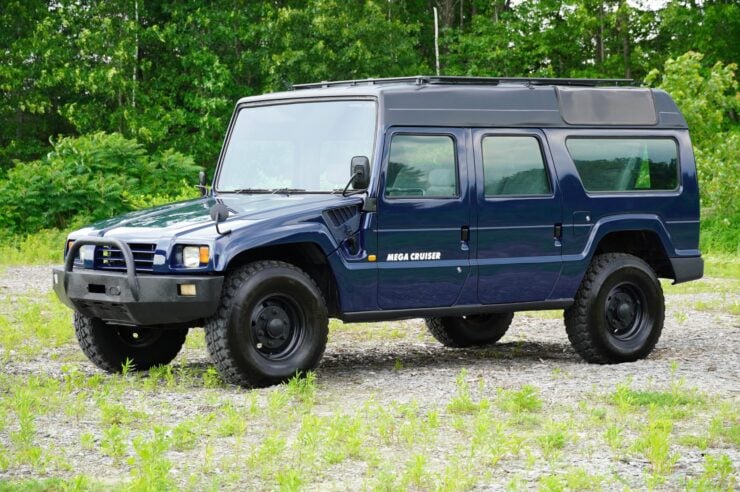
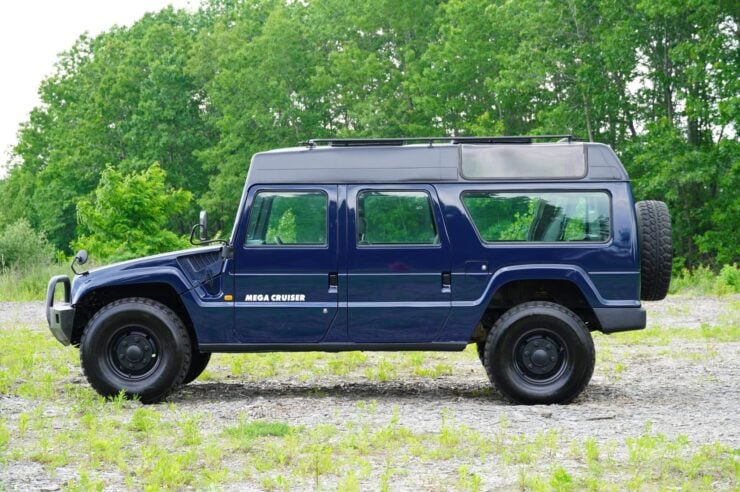
Images courtesy of Bring a Trailer



